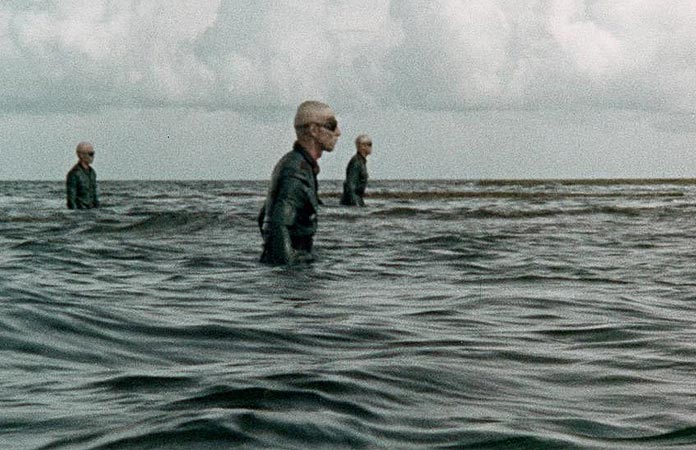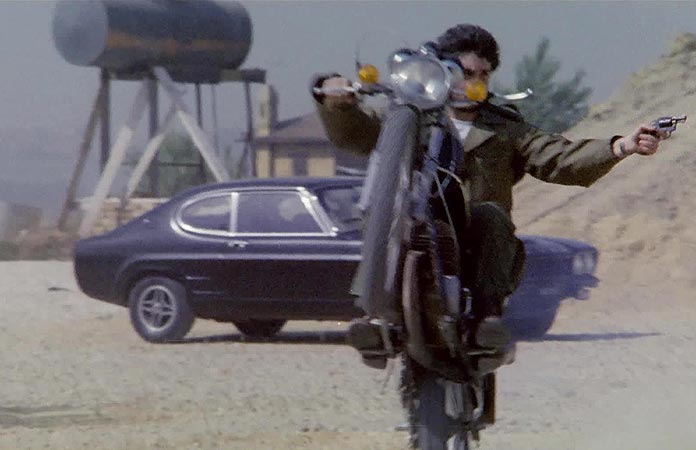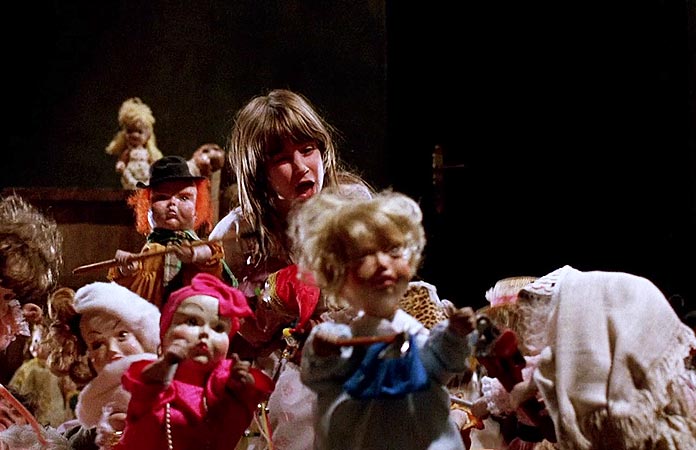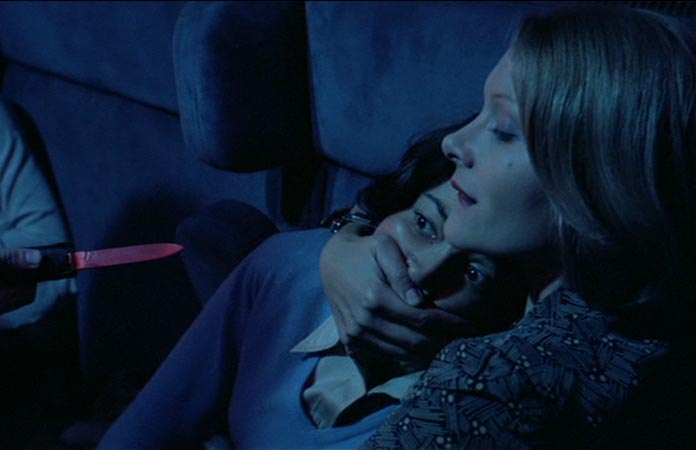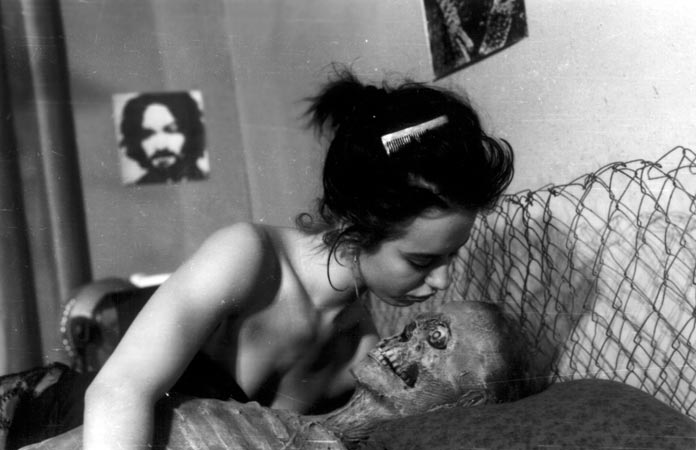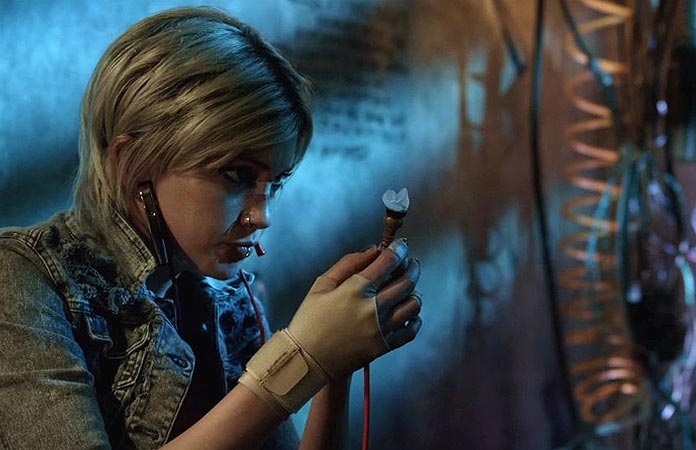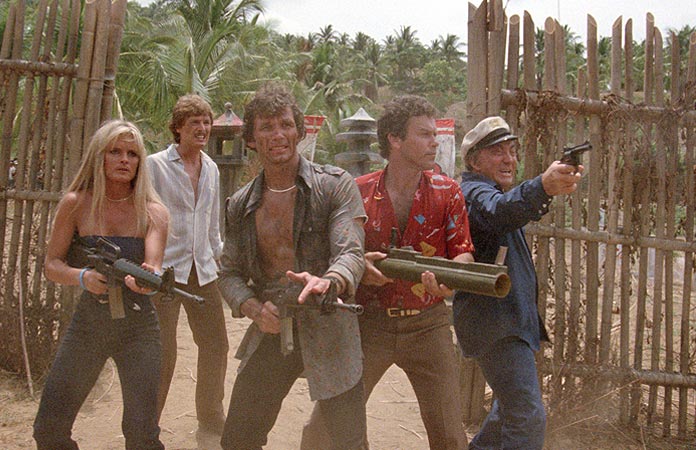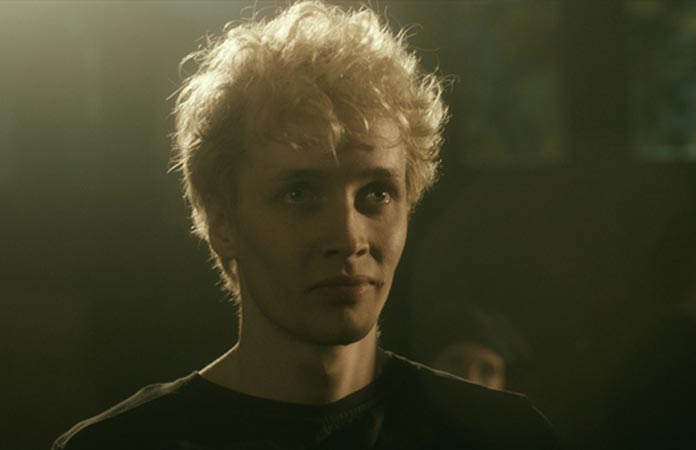Blu-Ray Review: Shock Waves
Published on November 21st, 2014 in: Blu-Ray, Current Faves, DVD/Blu-Ray Reviews, Horror, Movie Reviews, Movies, Reissues, Retrovirus, Reviews |When I started watching all the zombie films I could get my hands, I stumbled into the realm of Nazi zombies, a.k.a. Nazisploitation. I started with Zombie Lake (which looked great but is not a good film) and then I watched Oasis Of The Zombies (I’m thankful I didn’t slit my wrists during that viewing). Needless to say, when Shock Waves came into my hands I looked away, rolled my eyes, and took a step back. After a year or so, I finally gave it a shot because I found out Ken Wiederhorn directed it and I loved Return Of The Living Dead Part 2, Meatballs 2, Eyes Of A Stranger, and a lesser-known film called Dark Tower.
Blu-Ray Review: Stunt Squad
Published on November 21st, 2014 in: Action Movies, Blu-Ray, Current Faves, DVD/Blu-Ray Reviews, Movie Reviews, Movies, Reissues, Retrovirus, Reviews |I don’t know if I would be the same person today if not for Italian cinema. My film school was watching Italian action and horror movies; they taught me everything I know. Some people have a beef with the stories, while others can’t stand the dubbing, but that’s just how it is. Some of the original Italian tracks were lost and some were made for America with Italian actors who were then dubbed over during post-production with audio that was never meant to be released. Even if the dubbing is bad, I try to overlook that because it can’t be helped. I’m just thankful I can actually see the films because some weren’t preserved very well. Luckily, there are still some companies keeping these films alive by exposing the world to them.
Blu-Ray Review: Two Evil Eyes
Published on November 21st, 2014 in: Blu-Ray, DVD/Blu-Ray Reviews, Horror, Movie Reviews, Movies, Reissues, Retrovirus, Reviews |People say the 1990s was the worst decade for horror films. I wouldn’t use the word “worst,” but I will say out of all the recent decades it wasn’t the strongest. Calling it the worst just makes it sound like all the films from that decade are terrible, but ‘90s horror is special to me. I love it and I always will.
Blu-Ray Review: Dolls
Published on November 7th, 2014 in: Blu-Ray, Current Faves, DVD/Blu-Ray Reviews, Horror, Movie Reviews, Movies, Reissues, Retrovirus, Reviews |Stuart Gordon was one of the first directors I fell in love with. It started when I saw Robot Jox and then continued from there. Gordon’s films have had a huge impact on the horror industry and he still rocks people to this day. He hit it big with Re-Animator and From Beyond at the start of his career and pretty much everything that followed is considered a classic and loved by almost every horror fan. With Re-Animator and From Beyond we have films that blend sci-fi and horror, but both tell ambitious stories. I’ve always thought that Stuart Gordon was diverse because of his multiple styles, as seen in films like Space Truckers, Fortress, and of course, Dolls.
Blu-Ray Review: Night Train Murders
Published on November 7th, 2014 in: Blu-Ray, Current Faves, DVD/Blu-Ray Reviews, Horror, Movie Reviews, Movies, Reissues, Retrovirus, Reviews |Aldo Lado has made some intense films in his day, including Short Night Of Glass Dolls, Who Saw Her Die?, The Humanoid, and Night Train Murders. Lado’s films look incredible: he has a great eye for using just the right amount of light in his shots, always giving a heavy, giallo, neo-noir look to his films.
Blu-Ray Review: Nekromantik
Published on October 31st, 2014 in: Blu-Ray, DVD/Blu-Ray Reviews, Horror, Movie Reviews, Movies, Reissues, Retrovirus, Reviews |Years ago I came across a VHS bootleg of Nekromantik. All these years later, I thought I had seen Nekromantik in its entirety. I was wrong.
DVD Review: The Scribbler
Published on October 24th, 2014 in: Blu-Ray, Comics, DVD/Blu-Ray Reviews, Movie Reviews, Movies, Reviews |Whenever I hear a film is based on a graphic novel I get a little excited. I love graphic novels and I have enjoyed the majority that have been turned into movies. When The Scribbler came to me I was pumped to watch it because it seemed like a weird and ambitious story.
Before I get into the film I will say this: Filmmakers, stop trying to copy Sin City, Watchmen, and 300.
Blu-Ray Review: Raw Force
Published on October 24th, 2014 in: Blu-Ray, Current Faves, DVD/Blu-Ray Reviews, Movie Reviews, Movies, Reissues, Retrovirus, Reviews, Underground/Cult |I could go on and on again about how important Vinegar Syndrome is to cinema but I’ll refrain . . . for now. Instead, I’m going to attempt to explain the awesome and completely nutty Raw Force. I first saw this film about a year and a half ago and didn’t know what to say. It has everything that I want in old cheesy B-movies: comedy, action, boobs, karate, rocket launchers, zombies, weird parties, horrendous acting, people breaking ice with their faces. (Seriously, a dude breaks a block of ice with his face, but it isn’t for show; it is actually to get ice for a drink he is making for someone. I shit you not on this.)
Blu-Ray Review: Nothing Bad Can Happen
Published on October 17th, 2014 in: Blu-Ray, Current Faves, DVD/Blu-Ray Reviews, Horror, Movie Reviews, Movies, Reviews |The cruelly and ironically titled Nothing Bad Can Happen is nothing less than a hard kick to the stomach. Katrin Gebbe’s debut isn’t a horror film, yet it still horrifies. Nothing Bad Can Happen stuns and unsettles the viewer like the also-incendiary debuts of Maury and Bustillo (À l’intérieur) or Du Welz (Calvaire), yet without the gore of the former and the surrealism of the latter.
Blu-Ray Review: Cold In July
Published on October 3rd, 2014 in: Blu-Ray, Current Faves, DVD/Blu-Ray Reviews, Movie Reviews, Movies, Reviews |It’s best not to know a whole lot about the plot going into Jim Mickle’s latest film Cold In July. If you haven’t read the Joe R. Lansdale novel upon which the movie is based (like me), try not to form any preconceived notions from the tag line or cover art and just go with it. If you’re about ten minutes in and thinking, “Damn, this is just a whole bunch of stalker-revenge movie clichés that aren’t really doing it for me,” keep watching. There’s no M. Night Shyamalan-style twist, just a lot of well-crafted narrative turns that will keep your attention even after the movie ends. It’s that good, and easily the best of Mickle’s last three films.
